The SKS is a strange bird. The Samozaryadny Karabin sistemy Simonova, when it entered production in 1945, was a product of its times. And despite it being a gun with a devoted cult following, the SKS had one problem that—more than any other—would prove to be the reason for its irrelevance: the magazine.
Consider where it stood at the end of the war. Big .30 caliber battle rifles were (mostly) a dying breed. The M14 would be the last hurrah on the American side (mostly) before the 5.56 would dominate. And in Russia, the SKS was little more than a blip on the way to the AK-47 and would be destined to be the ugly little brother to that rifle for the rest of its service life.
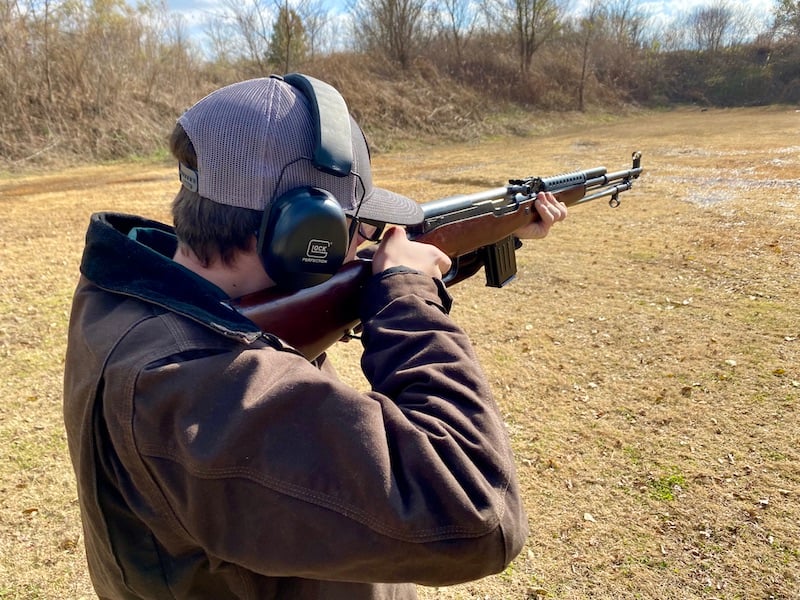
And rightfully so. Though I appreciate the nostalgia, I’m not an SKS devotee. When I was a teenager, an uncle of mine had one that may have been a bring-back from the middle east, but I didn’t get enough trigger time with it to really fall in love with it. But I found a great Chinese SKS at a gun show recently, and added it to the stable.
The SKS Had Problems
The bayonet charge is so 19th century. Maybe early 20th, if you managed to escape getting mowed down with a machine gun or gassed. But by 1945, there weren’t many full-scale bayonet charges. No one told that to the SKS.
The stock is also a bit pre-war. Like the AK that would follow it, this is a gun that really needed an entirely new approach to its stock. But like the bayonet, there was an effort made to stick with convention, so it had a more traditional stock. No pistol grip.
These were wooden at first, which added weight. Later they were fiberglass and Bakelite—materials that were decidedly post-war, but still heavy and problematic.
As these guns were mass-produced and meant for use by the enlisted masses, there was no concern for mounting optics. Scopes were hardly common, so this, too, seems like a logical design choice for the time.
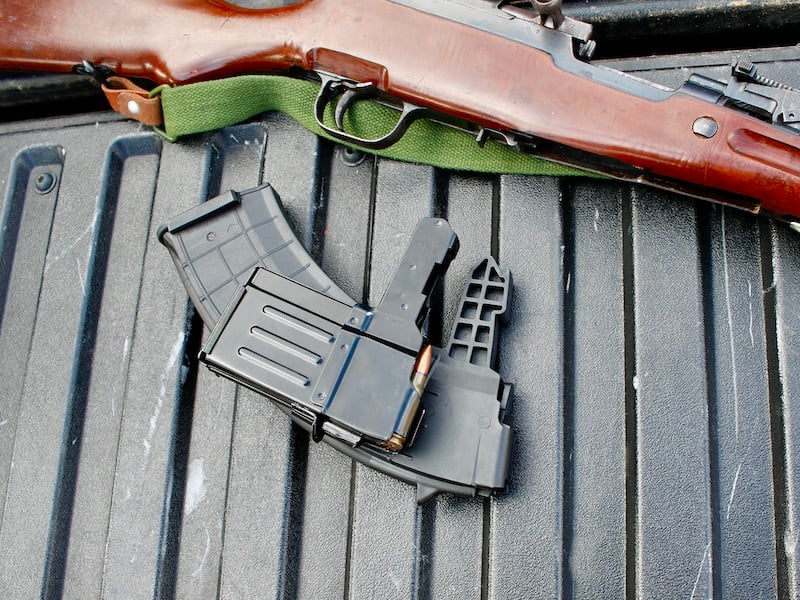
The Magazine
The original SKS—as effective as it was—had a well-built 10-round magazine fixed in the stock. This prevented fast reloads. Logically, capacity was an issue. With only 10 rounds, there were no options for select-fire, either.
This mag design was reliable, sure, but it also was limited. Put the SKS with its 10-round mag next to an AK with a stack of 30-round mags, and the difference becomes glaringly apparent. Still-—don’t overlook the benefits of a 10 round mag.
It isn’t that the SKS as a bad rifle.
If this gun had been available to the Russians at the start of the war, there would be more people collecting and celebrating these. Compared to other rifles of the era, it really is a beast to contend with. But it came too late for that conflict and was quickly eclipsed by the AK and so it saw service only with reserve units and communist upstarts that Russia wanted to appease with small arms, but keep woefully under-gunned.
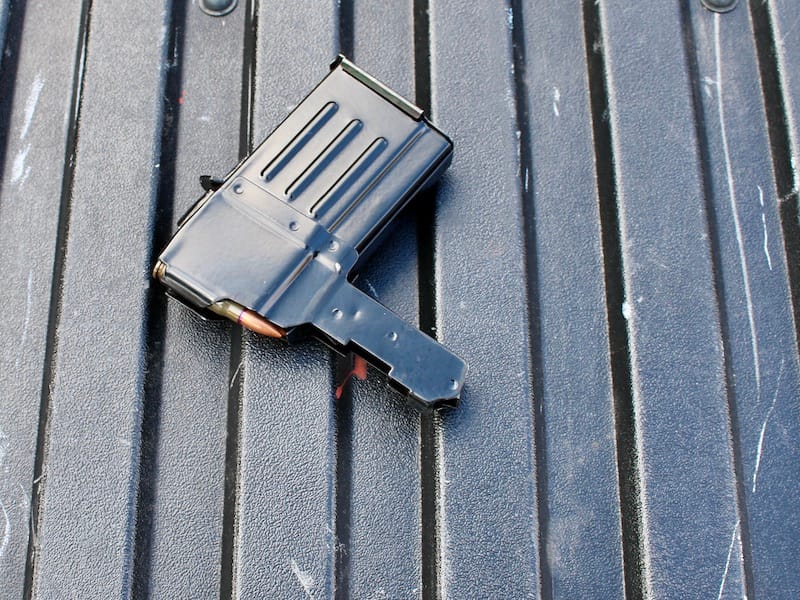
The Fix
There are some SKS fans who like the novelty. Or maybe it is more than a novelty—perhaps it is a devotion to history mixed with a desire to address some of the flaws. Or maybe they’re people who, for decades, saw the SKS for its value—these were the milsurp days when an SKS would set you back a Benjamin or so, and a spam can of 7.62 x 39 cost about the same as a can of SPAM.
There are some who want to make scope mounts. Others want to swap out the stocks. But the real fix came with the movement to address the magazine problem.
The first challenge was to increase capacity. The example here was close at hand. As this is a 7.62 x 39, the AK platform offered some of the most well-built magazines in existence.
The SKS mag has a leg that extends forward of the front of the magazine. By addressing the way an AK mag connects, it is possible to get a magazine that can rock into place and rock out of place. While not stupid fast, it is a detachable system that is easier to work with.
Do they all work?
Some work better than others. The only way I’ve found to know is to try some out. I find that the metal magazines are thinner. The connections on the steel mags tend to be thinner because of the (forgive me for stating the obvious here) need for the plastic to be thicker to approximate the rigidity and strength of the steel.
On the SKS that I’ve got, the steel mags work flawlessly. Make sure the gun is unloaded and pop out the trigger group. The mag should be easy to remove then.
Once you have the old mag pulled from the stock, leave the cavity open. After the gun is reassembled, the new mags rock into place and fit snugly.
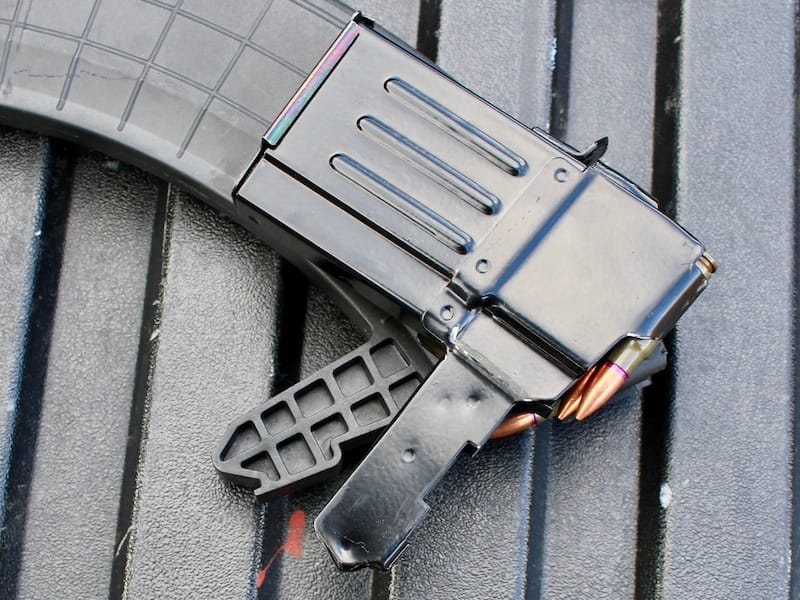
There were no feeding issues. Recoil didn’t shake them loose. Changing out the mag takes me slightly more time than it does on an AK, but the effort was well worth it.
The ProMag mag, though, proved too large and required some finesse to get in.
I had two mags in from ProMag—one 30-round polymer and one 30-round in steel. The steel fit, but the polymer one I had to wrestle with.
I’ve yet to remove material from the polymer mag, though I think that’s a better option than removing material from the SKS stock (and I wouldn’t remove material from the action or bedding of the rifle).
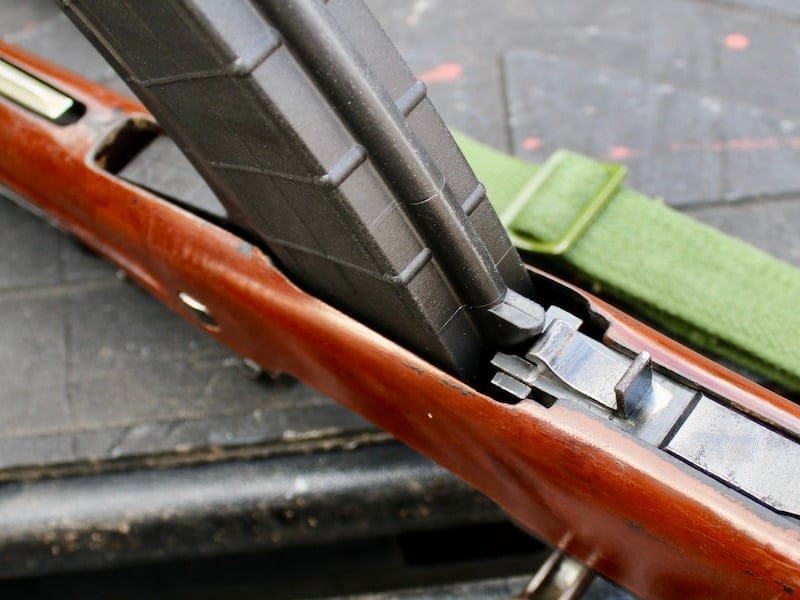
Pro Tip
Remember that the SKS is one of those guns that wasn’t built around the detachable box mag. As such, you will have the best results if your bolt is locked to the rear. This goes for removing a mag and putting in a new one.


